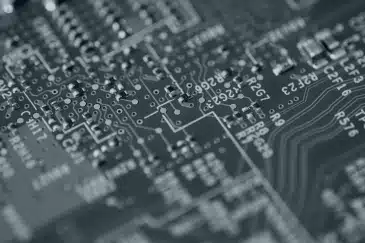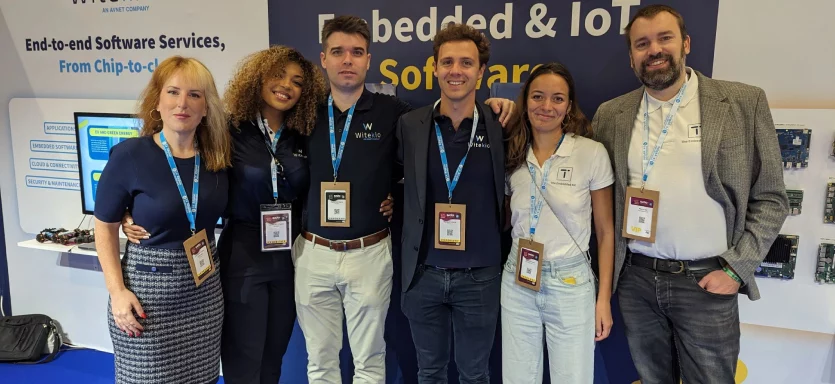Zephyr RTOS
Transform your embedded systems with Zephyr RTOS advanced real-time capabilities and seamless integration.
What is Zephyr?
Zephyr RTOS is a highly configurable open-source real-time operating system (RTOS) hosted by the Linux Foundation, tailored for IoT (Internet of Things) and resource constrained devices for embedded technology sectors. Its lightweight, scalable design supports multiple hardware architecture, including Arm®, x86, and RISC-V. Zephyr is optimized for applications requiring precise timing, robust security, and scalable performance, making it suitable for several industries such as IoT, automotive, healthcare, and industrial automation.
The main challenges of Zephyr RTOS

Resources constraints
Zephyr RTOS is dedicated to small and very small targets such as gateways, end user interfaces, sensors. These kinds of targets are built with an MCU including only a few kilobytes of memory to execute applications. These resources constrained environment means devices require a careful optimization of the RTOS and related libraries to fit the requirements of the projects.

Security
Most of the embedded end devices running a real time operating system (RTOS) are deployed in the field, and plenty of them are not easily accessible to perform firmware updates. Secure boot, long term support and remote software updates features including data encryption and tracking of vulnerabilities are part of the key challenges while developing embedded devices for customers.

Scalability
The acceptability of the Zephyr solution is directly linked to the scalability of the project. Maintaining source code with good performance, responsiveness across a wide range of different embedded devices accommodating diverse hardware requirements is time consuming and very difficult.

Nicolas Gambini
CEO & Co-founder

Witekio seamlessly assisted in meeting our low-level software challenges by providing a system architecture recommendation and embedded software development support.
Key features of Zephyr
Real-Time Capabilities
Zephyr provides a rich set of kernel services (multi-threading, inter-thread synchronization, memory allocation…), features and scheduling algorithms for developers. This is essential for applications requiring precise timing and responsiveness, such as for customers in the industrial automation and healthcare industries.
Cross-Architecture Support
Zephyr supports various hardware architectures including some ARM Cortex cores, Intel x86, RISC-V, Tensilica Xtensa. Low-level drivers are provided. Dozens of supported development boards are proposed to start building and evaluating Zephyr very quickly.
Security focus
Zephyr integrates features such as memory protection, access controls, and secure boot options ready which are crucial for embedded systems. Several OTA frameworks are also available so that you are locked and your devices will be able to receive security updates and bug fixes in the field. Zephyr CVEs are tracked by the NIST Vulnerability Database.
Modular architecture
Zephyr provides a lot of flexibility to include only the necessary components in your application, and a lot of configuration options to customize each of them. This allows to optimize the RTOS footprint for each specific use cases, focusing on the constrained resources of the devices.
A comprehensive set of libraries, protocols, and device drivers simplifies MCU development. Few examples include support of Bluetooth connectivity, LoRaWAN, OpenThread, LVGL, littlefs technologies and multiple device drivers such as network interfaces, displays, touchscreen controllers, audio codecs,…
Zephyr adopted a device driver model with a device tree configuration allowing a very simple and quick integration of specific hardware interface and peripherals. Integrating a radio interface, a specific screen or any other specific stuff is usually just a few lines of configuration in the devicetree. Then you are ready to use it in your own application. This model helps to create variants of the same products with different hardware configurations by a developer.
Additionally Zephyr supports integration of external modules so that any project can write modules, independent and easily reusable, and integrate them. Existing well known libraries defined in compile time that you may know such as cJSON, secure element libraries, etc can also be integrated as Zephyr modules so that it is not required to rewrite existing source code to integrate in Zephyr. This permits to speed up the development by reusing existing lightweight well-known source code for MCU projects porting from other RTOS or development environnements.
A comprehensive set of libraries, protocols, and device drivers simplifies MCU development. Few examples include support of Bluetooth connectivity, LoRaWAN, OpenThread, LVGL, littlefs technologies and multiple device drivers such as network interfaces, displays, touchscreen controllers, audio codecs,…
Zephyr adopted a device driver model with a device tree configuration allowing a very simple and quick integration of specific hardware interface and peripherals. Integrating a radio interface, a specific screen or any other specific stuff is usually just a few lines of configuration in the devicetree. Then you are ready to use it in your own application. This model helps to create variants of the same products with different hardware configurations by a developer.
Additionally Zephyr supports integration of external modules so that any project can write modules, independent and easily reusable, and integrate them. Existing well known libraries defined in compile time that you may know such as cJSON, secure element libraries, etc can also be integrated as Zephyr modules so that it is not required to rewrite existing source code to integrate in Zephyr. This permits to speed up the development by reusing existing lightweight well-known source code for MCU projects porting from other RTOS or development environnements.
Zephyr is open source
Zephyr is an open source project which promotes collaborative effort and allows developers to access, modify, and contribute code freely. The main MCU vendors are part of the project as official Project Members and contribute actively to it: Nordic Semiconductor, STMicroelectronics, NXP, Renesas…
Hundreds of independent developers also already contributed to Zephyr to propose bug fixes, new drivers, boards support, tools, release information etc. Multiple Pull Requests are submitted, reviewed and merged each week, which makes Zephyr the most actively developed open sourse RTOS, actually. Everyone is welcome to participate, why not you?
Zephyr licensing model
Zephyr RTOS operates under the Apache 2.0 license, a permissive open-source license that encourages widespread use and collaboration. This licensing model allows developers to freely use, modify, and distribute the open source software with minimal restrictions, fostering innovation and community contributions. The Apache 2.0 license also provides a robust framework for intellectual property protection, ensuring that contributions to the Zephyr project are legally sound and that users and developers can confidently integrate Zephyr into their commercial and proprietary projects without the risk of legal complications. This open yet secure licensing approach makes Zephyr an attractive choice for a wide range of applications, from hobbyist projects to enterprise-level deployments for the industry.
Main benefits of Zephyr for embedded systems and connected devices
Cross-platform support
In a global context with difficulties to supply some components, leveraging the cross-platform architecture of Zephyr to create several variants of the same product based on different MCUs from different manufacturers is an interesting solution that is already integrated in the development and manufacturing process of several companies Witekio is working with. The modular approach of the hardware configuration and the software integration of the libraries and modules helps to build portable applications. This avoids difficulties during the production, particularly when manufacturing thousands or million of devices and commercial products for the market today.
Proven RTOS Ecosystem
Zephyr is not only an open sourse real time operating system (RTOS) with few additional stacks to start creating IoT devices with an MCU. It is an ecosystem. A rich set of libraries, features and protocols are provided out of the box and well-supported, maintained by the core development team of Zephyr.
Compared to other well-known solutions and other RTOSES such as FreeRTOS or ThreadX, Zephyr offers an infinitely larger and richest set of components, such as supported boards and development tools, ready to be integrated into your applications.
Zephyr Community
Zephyr is continuously growing thanks to a very large active community supporting the development of the RTOS and related libraries. This is encouraged by a lot of international after-work events and conferences which some of them are organized or supported by The Zephry Project and the Linux Foundation.
The active community allows developing complex solutions quickly and fix eventual bugs in the source code. Up-streaming code is encouraged, appreciated and reviewed with care by Zephyr core development team.
Witekio can support with Zephyr RTOS
Witekio offers expert assistance in implementing and optimizing Zephyr RTOS for your specific needs. Our professional services will include:
By leveraging Witekio expertise, support and services, you can harness the full potential of Zephyr RTOS for your real-time, embedded applications, ensuring robust performance, security, and scalability.
- Custom Kernel Modifications: Tailoring Zephyr’s rocket kernel to suit your application requirements.
- Driver development: Supporting your own custom interfaces and peripherals in Zephyr ecosystem.
- Power Management Optimization: Developing energy-efficient designs to extend battery life and reduce energy consumption of the hardware.
- User Interface Development: Creating intuitive and seamless UIs that integrate with Zephyr RTOS.
- Cross-Platform Porting: Assisting in migrating applications from other operating systems to Zephy, ensuring cmpatibility and optimal performance.
By leveraging Witekio expertise, support and services, you can harness the full potential of Zephyr RTOS for your real-time, embedded applications, ensuring robust performance, security, and scalability.
